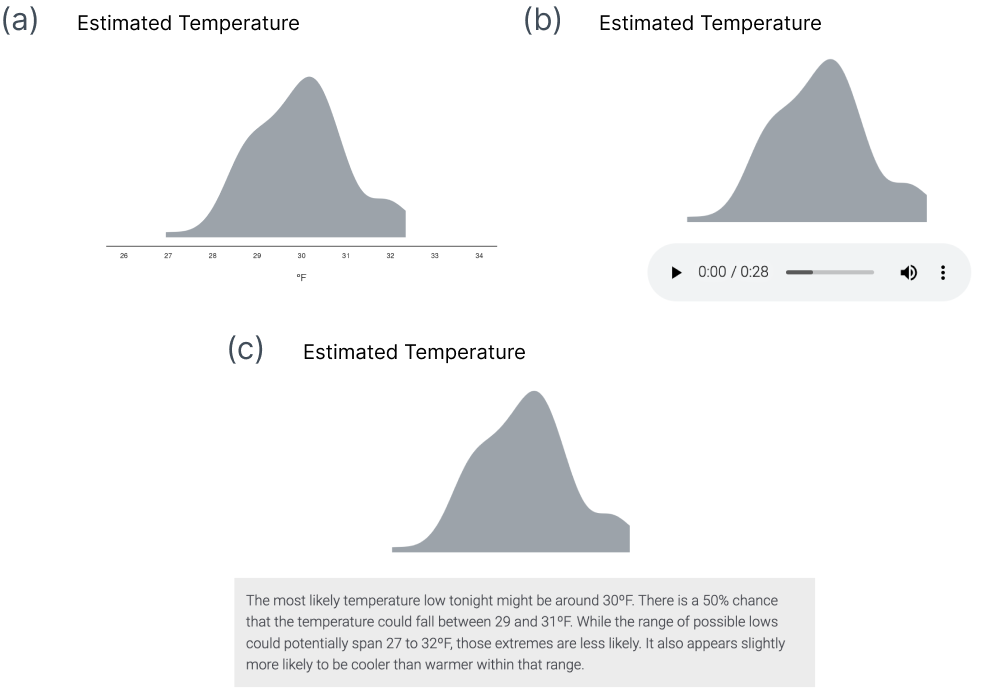Voicing Uncertainty: How Speech, Text, and Visualizations Influence Decisions with Data Uncertainty
Chase Stokes - University of California Berkeley, Berkeley, United States
Chelsea Sanker - Stanford University, Stanford, United States
Bridget Cogley - Versalytix, Columbus, United States
Vidya Setlur - Tableau Research, Palo Alto, United States
Download preprint PDF
Room: Bayshore VI
2024-10-14T12:30:00ZGMT-0600Change your timezone on the schedule page
2024-10-14T12:30:00Z

Fast forward
Abstract
Understanding and communicating data uncertainty is crucial for informed decision-making across various domains, including finance, healthcare, and public policy. This study investigates the impact of gender and acoustic variables on decision-making, confidence, and trust through a crowdsourced experiment. We compared visualization-only representations of uncertainty to text-forward and speech-forward bimodal representations, including multiple synthetic voices across gender. Speech-forward representations led to an increase in risky decisions, and text-forward representations led to lower confidence. Contrary to prior work, speech-forward forecasts did not receive higher ratings of trust. Higher normalized pitch led to a slight increase in decision confidence, but other voice characteristics had minimal impact on decisions and trust. An exploratory analysis of accented speech showed consistent results with the main experiment and additionally indicated lower trust ratings for information presented in Indian and Kenyan accents. The results underscore the importance of considering acoustic and contextual factors in presentation of data uncertainty.